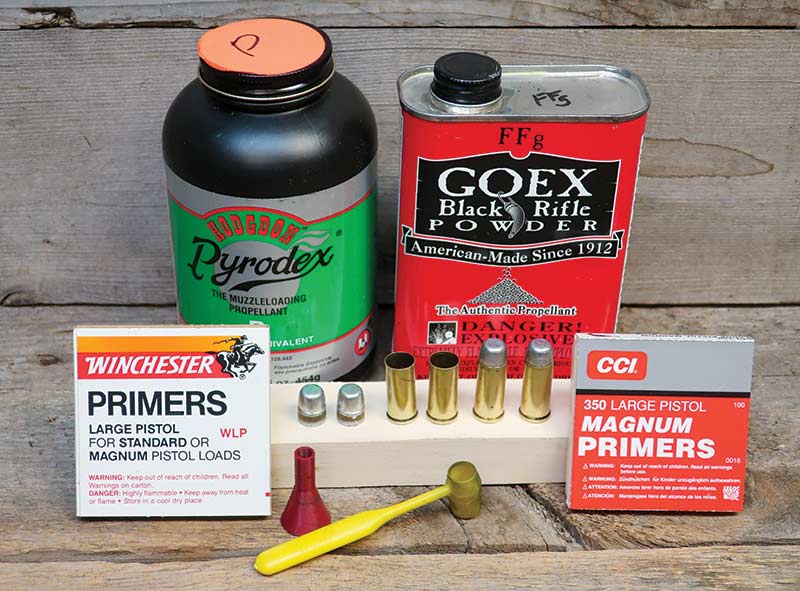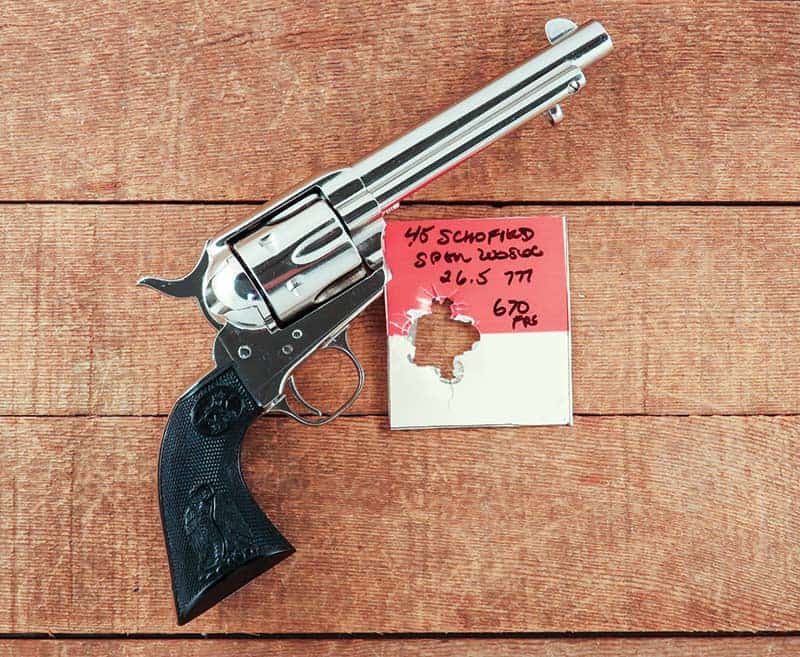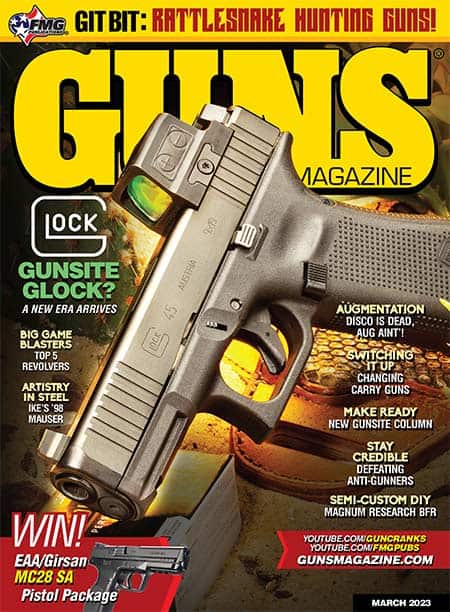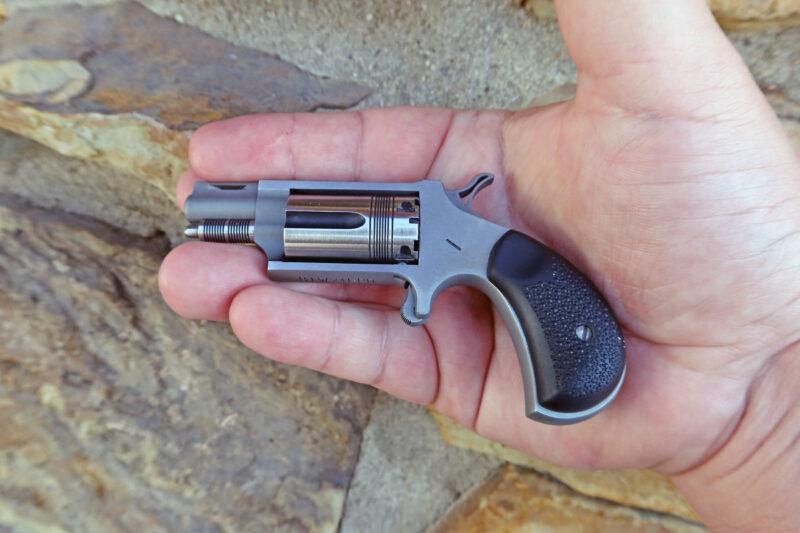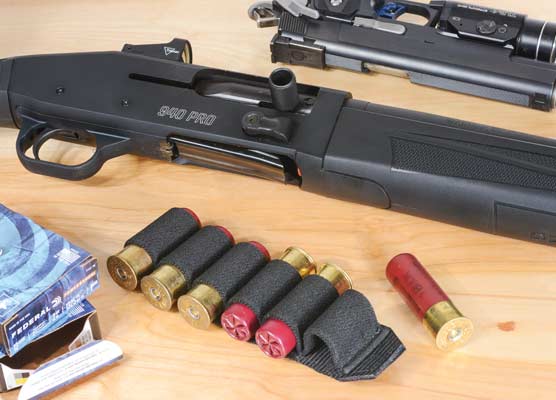Black Powder Cartridges Part IV: The .45 Schofield
Two of A Kind Makes For Confusion
The United States Military adopted the Colt .45 Single Action Army in 1873. Apparently Smith & Wesson wanted in on the military contract so decided to chamber their Model #3 in .45. However, there was a problem — the frame and the cylinder of the Smith & Wesson were too small to accept the length of a loaded .45 Colt cartridge.
The natural thing would have been for Smith & Wesson to adapt their revolver to the .45 Colt. However, they took the easy way out and instead adapted the .45 Colt to their revolver. Since it was too short for the .45 Colt, Smith & Wesson came up with a new cartridge, a shorter .45 — the .45 Schofield. Instead of the 250-grain bullet of the .45 Colt, the Schofield used a 230-grain bullet loaded over 28 grains of black powder. This basically duplicated the .45 ACP load, which would arrive 35 years later chambered in the Model 1911 Colt.
New Kid On The Block
The new .45 Smith & Wesson sixgun was known as the Schofield Model. It was designed by Col. George Schofield using the standard single-action Model #3, with a top-break frame, 7″ barrel and a six-shot cylinder. In addition to the new cartridge, Schofield improved the latch of the Model #3 placing it on the frame instead of the top strap, making it much easier to operate especially on horseback.
In 1875 the military procured about 3,000 Schofields. Now they had two .45 sixguns issued to their cavalry and it doesn’t take much imagination to see the problem coming. The .45 Schofield would chamber in the .45 Colt sixguns but the reverse was not true.
The prevailing wisdom is the military dropped purchasing new Schofields due to the above problem. However, noted firearms authority Col. Charles Pate, reports the .45 Schofield was still in use in 1887.
In Centerfire American And British Pistol And Revolver Cartridges from 1950, authors H.P. White and B.D. Munnall state the military got around the above mentioned problem by ceasing the manufacture of the .45 Colt ammunition in the government arsenal and instead concentrated on the Schofield cartridge, which could be used in both the Colt and Smith & Wesson .45 sixguns.
The Schofield was produced only with the standard 7″ Cavalry Model barrel. However, several hundred of these were cut back to 5″ and marked “W.F. & COS EX” and sold to Wells Fargo.
In the mid-1990s Navy Arms brought back the Schofield with an Italian replica from Uberti. Over the ensuing years it has been offered by several American distributors and in barrel lengths of the original 7″, the Wells Fargo 5″ and an easier-to-conceal 3 ½” barrel. These are quality replicas yet they are chambered in .45 Colt instead of .45 Schofield.
Currently manufactured replica Schofields will accept both .45 Schofield and .45 Colt ammunition. However, this does not necessarily transfer over to other sixguns chambered in .45 Colt. The problem arises as the .45 Schofield has a different diameter rim than the .45 Colt.
Going back to the original .45 Colt ammunition, we find a very minuscule rim that was no problem in the Colt Single Action Army as cartridges were ejected one at a time with the ejector rod. However, the Smith & Wesson Schofield used simultaneous ejection of all cartridges with a star-shaped ejector, much like those found on double-action revolvers today. For this to work, it required a sturdier rim than found on .45 Colt cartridges at the time. The .45 Schofield rounds will work in all replica .45 Colt Single Actions I have encountered, but problems arise when trying to use the Schofield in a sixgun featuring enclosed rims such as the Ruger Old Model Blackhawk and Smith & Wesson .45 Double Action.
Schofield Today
Schofield brass and ammunition are both now available, thanks mainly to Starline and Black Hills Ammunition.
When the .45 Schofield first arrived, I reloaded it with my .45 Colt dies except for two changes. It required a different shell holder and I seated and crimped with a .45 ACP die. This carries on today and my die box marked “.45 Schofield” contains a separate shell holder and a .45 Schofield seating and crimping die.
For loading black powder cartridges, I start as I do with any sixgun loads, namely full-length resize the brass whether it be fired or brand-new, expand the case mouth, and seat a new primer, preferably a magnum primer to help with ignition. I’m not near as much in a hurry as I used to be so most of my black powder cartridges are now charged with powder using the Lee Powder Measure Kit. The scoops are measured in cubic centimeters and the kit has about a dozen ranging from 0.5cc to 3.4cc. The ones I find useful for loading .45 Schofield with Black Powder are 1.3cc, 1.6cc and 1.9cc that dip 22.0, 26.6 and 30.0 grains respectively of FFFg black powder by volume.
Placing the cartridges in a loading block, I use the desired dipper and a small funnel to place the powder in each case. For other charges, I use an adjustable handheld powder measure set for the desired charge. I normally then place a wad such as Ox-Yoke provides, on top of the powder before seating the bullet. The wad helps cut down on fouling as does choosing a bullet that features a large deep lube groove and is mated with lube especially designed for black powder such as SPG or Lyman Black Powder Gold. If time permits, I also run a soaked patch down the barrel after every cylinder full is fired.
My two most used bullets for loading the .45 Schofield are the Oregon Trail 200 RNFP and the RCBS #45-230CM that duplicates the bullet weight of the original. Using this RCBS bullet and a 7 ½” barreled .45 Colt Single Action gives the following results: 23.0 grains of Triple Seven FFg gives 800 fps; 26.5 grains Pyrodex P, 824 fps; 26.5 grains of RS Select, 752 fps; and 26.5 grains Goex FFg, 787 fps. With the 200-grain RNFP 30.0 grains of Goex FFg results in 732 fps; 22.0 grains of Triple Seven FFg yields 788 fps; 22.0 grains of Pyrodex P, 771 fps; and 30.0 grains of Goex Cartridge is right at 655 fps. These are all very pleasant and accurate shooting loads.
Using the shorter Schofield loads in the .45 Colt chambered cylinders can result in a potential problem, namely a ring being deposited in the cylinder chamber at the front of the fired Schofield cartridge case. If allowed to build up, it can make chambering .45 Colt loads difficult or impossible. The solution is to thoroughly scrub out the cylinder after every shooting session.
In these days of shortages and high prices, the .45 Schofield gives more loads for the same price as the .45 Colt — though I refuse to say “More bang for the buck”!
